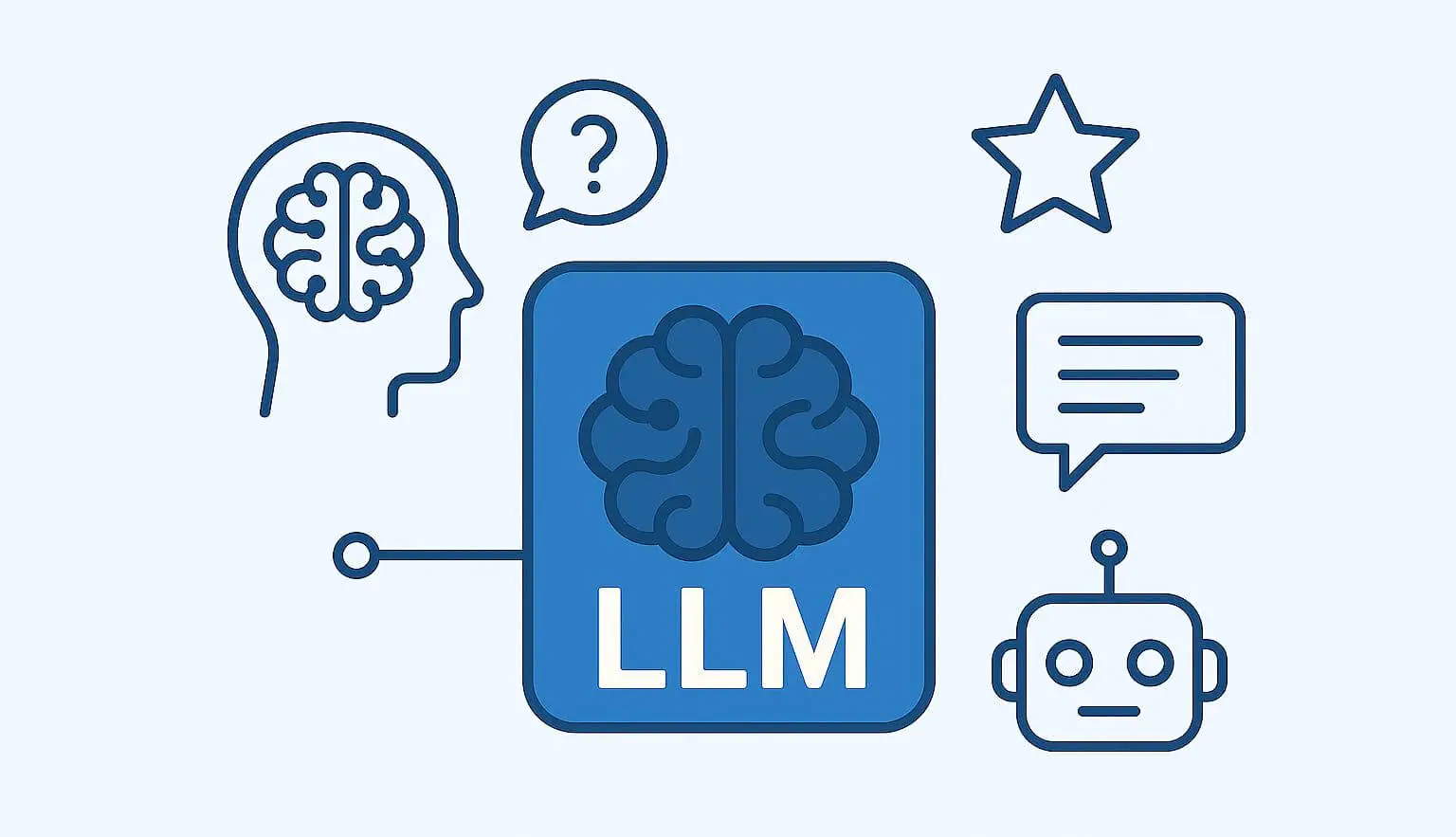
Large Language Models (LLMs): RAG, Context Engineering, and AI Agents

Have you ever wondered how Large Language Models (LLMs) and Artificial Intelligence technologies, which we’ve been hearing about so often lately, actually work? Technologies like ChatGPT, Gemini, and Deepseek have now become a part of our lives. So, how can we use large language model (LLM)-based technologies effectively? How can we develop projects with large language models? And more importantly, will artificial intelligence make us unemployed? Let’s explore these questions together!
1. What Are Large Language Models (LLMs)?
Large Language Models (LLMs) are artificial intelligence models trained on large datasets that are capable of understanding and interpreting text. Large language models can:
- Understand and interpret texts
- Generate answers to questions
- Summarize texts
- Create new texts
Since these models are trained on large datasets, they are also familiar with data found in many sources. Therefore, they hold a very important place as a research tool and source of information. Platforms such as ChatGPT, Gemini, Deepseek, and Claude use large language models.
Advantages:
- Research convenience provided by a large database
- Opportunities for productivity and automation
- Ability to be used as a personalized AI assistant
2. What Are the Limitations of Large Language Models (LLMs)?
Although large language models are impressive, they have certain limitations.
- Lack of Coverage: Data specific to you or your company is not included within the model’s scope. Therefore, you need to customize the models.
- Mathematical Calculation Ability: Although large language models can perform mathematical operations, they are not yet able to carry out complex calculations with 100% accuracy.
- Hallucination: Because large language models are familiar with a vast amount of data, they can make incorrect interpretations and confuse topics.
- Consistency: Large language models can produce very different answers when the same question is asked again.
We mentioned that we need to customize the model for the lack of coverage. So, how do we do this? Let’s explore the RAG method together!
3. What is RAG (Retrieval-Augmented Generation)?
RAG (Retrieval-Augmented Generation) is a method used to feed and customize a model with new data. Before generating a response, large language models retrieve relevant information from an external data source (search engine, database, document collection, etc.) and integrate it into the answer. Using the RAG technique, we can provide our own data to a pre-trained model and enable it to generate responses based on that data. This technique allows us to customize large language models according to our own data, creating a personalized assistant model.
How Does the RAG Method Work?
- The user asks a question.
- The system searches for documents/data relevant to the question (retrieval).
- The retrieved content is incorporated into the model’s response generation process (augmentation).
- The LLM generates an answer using both its own knowledge and the retrieved data (generation).
With this method, the model is not limited to its training data. It becomes a customized model by following our guidance and using the data we provide.
4. What Are the Advantages of the RAG Method?
- Currency: The latest data, articles, or private documents can be used.
- Accuracy: The rate of hallucination decreases.
- Personalization: User-specific information sources (e.g., CRM data, customer emails) can be utilized.
- Flexibility: New information can be added easily without retraining the model.
5. What Are the Use Cases of the RAG Method?
- Assistant Models: These are models that analyze information using the documents loaded into the model to provide support. They make accessing data easier in personal use or on screens developed for employees.
- Customized Models: The RAG structure is used when training a model for a specific task. With this method, you can teach the model processes, documents, and important topics, creating models that perform certain tasks on your behalf.
The RAG method also allows the model to learn and remember a topic or concept. Thanks to this method, even if you close your session, the information you added to your model is not lost, and you can reuse your customized model. With these features, the RAG method also contributes to another topics of LLMs: "Prompt Engineering", "Context Engineering".
6) What is Prompt Engineering?
Prompt Engineering is the art of asking the right questions to an AI model and guiding it to produce the desired output. Large Language Models (LLMs) are powerful systems with access to vast amounts of information. Therefore, to ensure that LLMs generate accurate and well-structured responses on the topic we want, we must guide them using effective prompts.
Prompt engineering goes beyond simply asking a question — it involves shaping and directing the model’s way of thinking. With the right prompt, we can make the most of the model’s capabilities.
So, what are the main approaches to Prompt Engineering?
-
Be Clear and Directive: Specify exactly what you want from the model, in what format, and based on which criteria it should respond.
-
Encourage Step-by-Step Thinking: Use phrases like “think step by step” to help the model reason through the problem logically.
-
Define a Role: Assign the model a role (for example, “you are a data analyst”), which significantly improves the structure and quality of its responses.
This approach transforms AI from being just a tool into a true collaborator that thinks with you. However, writing good prompts alone is no longer enough; broader questions such as how to feed the model with the right context and which data to prioritize are now addressed within the field of Context Engineering.
7. What is Context Engineering?
Context Engineering is a new approach that is beginning to replace prompt engineering. It is no longer sufficient to communicate correctly with the model alone. The question of “Which context should we teach the model and how?” becomes important. Context engineering is a more comprehensive method that involves selecting, organizing, and prioritizing documents to be added to the model, as well as guiding the model.
8. Agent Structures
Artificial intelligence Agents are structures that reason, make decisions, and take actions for specific topics. AI Agents consist of three main components.
- Software/automation that receives, processes, and organizes data to provide input to the model.
- Customized models trained for a task, forming the agent’s reasoning mechanism.
- Software/automation system that converts the output generated by the model into action.
The input and action-generation components of AI Agents are important software that provide automation without using AI. The customized model forming the agent’s decision-making mechanism is a restricted AI designed according to the needs of your work.
9. What is a Multi-Agent?
A Multi (Multiple) Agent is the combination of customized models with different capabilities. Instead of using a single model as the decision-making mechanism in an agent, multiple models with various skills are used to create a multi-agent structure. What is the benefit of a multi-agent structure? A single perspective is often insufficient for the problems we face, and we need to think from multiple angles for each issue. The same applies to agent structures. Agents encounter many topics such as analysis, finance, and reporting while performing their assigned tasks. At this stage, the multi-agent structure comes into play, bringing together different models with the necessary capabilities for the task under a single system
10. Security and Ethics
Another topic that has gained extra importance with the widespread use of artificial intelligence is security and ethics. One of the primary priorities when carrying out AI projects is data privacy. It is especially important that private data, such as company data, does not leave the company’s security boundaries. If real data is to be used, masking and anonymizing this data is crucial for maintaining data privacy.
Another important topic is Ethics. As with any work, in AI projects, the individuals whose data will be used must be informed and give their consent. Additionally, AI projects should not be used with the intent to harm others.
If you want to be informed about new works and similar content, you can follow me on the accounts below.
Linkedin: www.linkedin.com/in/mustafabayhan/
Medium: medium.com/@bayhanmustafa












